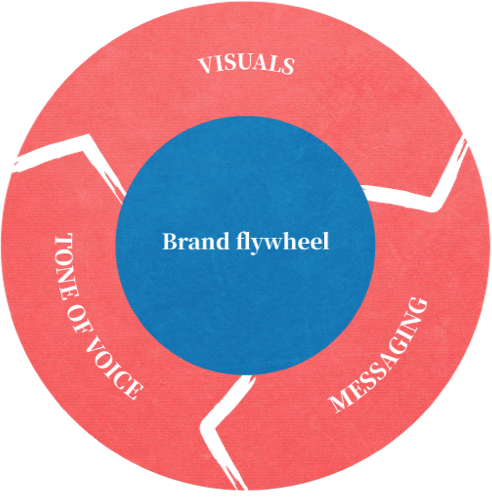Branding isn’t just about the look and feel of logos and colourways – but in many cases it ends up being just that. The result can be a hollow, half-baked job that isn’t effective at communicating with your audiences. So how can businesses avoid this pitfall, and make sure they get maximum impact from their brand?
Branding, eh? Bloody hell. Expensive business, lots of research, lengthy process with too many stakeholders and self-professed marketing experts. With a fair wind, at the end of it you’ll get an outcome that’s a good fit – but does it deliver everything you need to communicate effectively and consistently?

In many cases, particularly outside the untold riches of multinational consumer brands, this process tends to focus on the high-level position of the new brand and its visual identity. That’s crucial to the process, but not in itself comprehensive. In many cases those great visuals and ambitious yet generic proposition could just as easily relate to a can of beans as the specifics of your brand.
That’s especially true if you’re selling a technical product or service to multiple purchase influencers – where you’ll likely have a whole raft of things you need to consider within communications before you can even be taken seriously by your audiences, let alone sell. What’s more, if your brand is seen as shallow or hollow – the “usual marketing bullshit” – then you’re not just failing to hit the mark with potential customers, you’re probably creating a negative perception.
The bigger the marketing team and the more complex the market, the more important it becomes to avoid hollow brand syndrome. Without greater structure, marketing activity is too open to interpretation (although you need some of this, of course) and the risk increases that the audience just isn’t receiving accurate messages on a consistent basis – diluting the impact of your brand.
So how can you avoid this?
Ultimately, you’ll want to end up with a pack of assets that bridge the highfalutin design identity with what you need to ensure day-to-day marketing activity is consistent. Not just instructions on where the logo should sit on a letterhead, or which colours you definitely shouldn’t use. The exact nature of those assets will depend on the nature of your marketing activity, but there are some elements it’s important to factor in.
A useful way to think about this is a flywheel that has a number of interrelated elements – each crucial in their own way but also in driving the others.

Anti-hollow brand checklist
-
Tone of voice
Not just a few adverbs on a page, but real examples of how this should work in practice. Otherwise you’ll have twenty different interpretations of those adverbs within the first month of the brand launching.
-
Key messages
Particularly important if you’ve got multiple different audiences, purchase influencers and the like. That top level brand promise is all well and good, but how should that be communicated to these different groups? Try and set a small number of these so that you can get some consistency behind when and how they’re promoted.
-
Evidence points
Why should anybody believe your messages, just because you say them in a nice tone of voice? These become your core narratives – the stories you tell to convince people of your point of view. The best ones can be told over and over, in different ways and through different channels.







